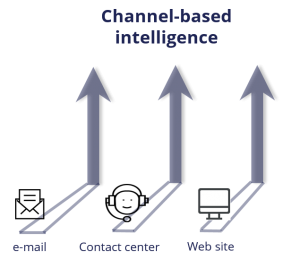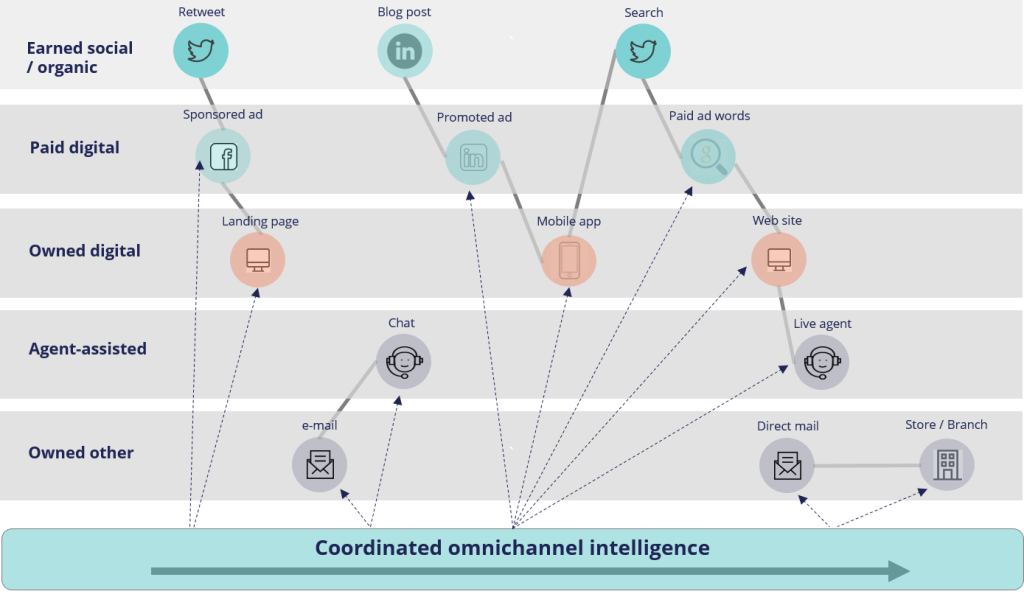Let’s face it. No one sets out to botch something up or fall short of reaching a goal. When marketing automation was in its infancy, and pioneers like Don Peppers, Martha Rogers, Tom Siebel, and Paul Greenberg envisioned marketing and CRM systems in the mid 1990’s, they set the right vision, believing great customer relationships could be initiated, fostered, and brought to scale with the right data and technology. Essentially, their collective creed was:
- Focus on the individual customer (e.g., be one-to-one and customer centric).
- Manage the relationship by understanding customers’ buying cycles, needs, and behaviors across the marketing, sales, and service functions.
- Use that knowledge to custom-tailor and personalize the experience.
- Use technology to deal with the scale required by larger businesses.
Thirty years later, sadly, this vision still seems out of reach, or at best, only partially realized. So why is that? What’s held back the realization of the vision? What are we still doing wrong?
Here are four unhealthy habits of nearly every marketer (so the good news is you’re not alone). Fix these, and you’ll get a distinct advantage, and get closer to marketing optimization and CRM nirvana.
Bad habit #1 – Focusing on customer segments and not individuals
Customers are individuals. Each has unique characteristics, nuances, and contextual needs that define who they really are. And though we’re awash in a wealth of unique behavior data, it’s a common mistake to continue trekking on the beaten path, making decisions based on segment characteristics rather than individual ones. For years, we’ve slotted customers into segments because we had no other choice, oversimplifying who they really are.

Source: https://www.nationalreview.com/2015/01/life-worth-living-lee-edwards/
It’s understandable in the initial stages of relationship management that businesses make broad customer classifications such as:
- Returning visitors
- Mobile visitors by geography and device type
- Registered users by gender and age (leading to segments like Millennials, Gen Zs, and Gen Alphas)
- Non-responders to an email campaign
Yet after these customers repeatedly interact and transact, clearly stating their implicit and explicit preferences, continually handing over lifestyle and contextual data, there’s no excuse for still making generalized, segment-based decisions. We’re spending millions collecting, storing, and refreshing specific behaviors and preferences, so we should use this data to drive individualized decisions and to customize treatments.
In a recent paper titled “Crossing the chasm: From campaigns to always-on marketing,” [i] Rob Walker and Matt Nolan contend that “building audiences using segmentation is a process that introduces severe challenges such as compromised relevance, unscaled labor, and collisions and conflicts.” They go on to suggest using a next-best-action approach, describing it as one that “targets individual customers, rather than segments – leveraging their unique needs, preferences, and context.”
Bad habit #2 – Focusing on selling products instead of customers’ needs
Sounds crazy, right? How else will we make money if we don’t sell products?

Source: http://careerthoughts.com/retail-salesperson-jobs/
Still one of the cardinal sins holding back modern marketers is focusing strategy and tactics solely on selling products. By doing this, we’re exasperating two problems:
- Product owners, incented to relentlessly push their products, bombard consumers with ill-conceived campaigns containing messages and offers that conflict, overlap, or worse, aren’t even applicable. When viewed through a customer’s lens, these promotions have little to do with their actual needs. As such, marketers often completely miss the relevance mark.
- Even when a product fits, companies fail to provide well-timed promotions, convenient services, and a context-sensitive experience. Oblivious to the individual’s situation, they make company-focused timing and interaction decisions, such as blindly promoting a product simply because ad budget might otherwise expire, or failing to promote crucial services in conjunction with the product. Consequently, tactics are entirely out-of-synch with the customer’s buying cycle and experience expectations.
Together, these problems compound customers’ negative brand perceptions. Rather than providing a stellar buying service, well-intentioned marketers inadvertently (and increasingly) overwhelm, turn off, and tune out consumers. Essentially blind to journey requirements, marketers miscalculate customers’ value calculus, timing preferences, and the overall interaction experience they need and expect.
In study after study (year after year), consumers and brands acknowledge these issues, both resoundingly stating their desire for solutions. For example, in 2012 the Corporate Executive Board (now part of Gartner) surveyed more than 7000 consumers and 200 CMOs, finding that what consumers want from marketers is relevance and “simply, simplicity.” [ii] That was 2012. It’s 2018, and not much has changed.
If corporations keep strategy oriented on selling products, customer relationships will remain transactional and experiences sub-optimal for many more years. Maybe we’ve forgotten what the R in CRM stands for. It was put there to remind us that what matters most is long-term relationship building. Our quest should be to unravel the mystery of a customer’s ever-changing needs, their journeys, and what drives their loyalty. Our job is to use that knowledge to create custom-tailored experiences.
Bad habit #3 – Building channel-based versus coordinated intelligence
Shortly after September 11, 2001, the US government came to a stark realization that its various intelligence agencies were massively disjointed and compartmentalized. This hadn’t happened overnight. It was years in the making, and although for decades ample resources were poured into each agency, no one agency was responsible for coordination. Attempting to solve this problem, the government established the Department of Homeland Security.

Source: http://vincejeffs.com/wp-content/uploads/2018/02/Channel-based-intelligence.png
In a similar vein, some firms have built up marketing automation and CRM intelligence in silos for over 30 years. In each channel (e.g., email, contact centers, web), they’ve poured substantial resources into projects aimed at beefing up customer intelligence. Each channel amassing data, rules, and intelligence, but no one designated as the coordinator, and information rarely shared. Subsequently, as more channels emerged, the problem grew larger. Today, many companies have 15 or more channels to manage, and no coordinating function.
To provide wonderful experience, brands need a function responsible for coordinated customer analytics, intelligence, and decision making, such as depicted in Figure 1. Its role is straightforward:
- Collect interaction intelligence and contextual data from each touchpoint, and connect it directly to a system that can leverage that information immediately.
- Be brain-like, tracking behavior patterns in real-time, sensing needs, and using analytics to dynamically calculate value, comprehend preferences, and predict intent.
- Play the arbitrator, weighing an individual’s needs against corporate initiatives, policy, risk tolerance, budgets, and economic goals. Make instant and well-balanced decisions, track the results, and learn from each decision.
Think of this, not as another physical department, but instead as a virtual customer-centric hub. Designed from the ground up to be connected to all customer touchpoints, it’s journey oriented versus channel centric. Cognizant of what transpired, why, and what’s best to do next, its embedded strategies and rules act as a real-time arbitration committee – making data-driven decisions in milliseconds versus months.
This hub is also more than a customer data platform. It’s an end-to-end engagement hub responsible for not only gathering and coordinating intelligence, but also gleaning real-time insights and taking action. To deliver on that, it manages key data, customer analytics, corporate rules and processes, and channel interfaces. In a calculated and auditable fashion, it makes recommendations, delivers them to touchpoints (the channel apps fine tune the experience), and it learns from a systemic set of impressions and responses.

Figure 1: Engagement hub provides coordinated omnichannel intelligence
Source: http://vincejeffs.com/wp-content/uploads/2018/02/Coordinated-omnichannel-intelligence.png
Bad habit #4 – Worrying primarily about marketing automation and technology, instead of experience
Automation, and the technology that enables it, efficiently repeats tasks. That’s great, if you computerize the right tasks that deliver the right experience. Look at it this way: spammers are very effective at marketing automation.
Above all, to achieve lasting loyalty and build value, avoid the temptation to recklessly make existing marketing processes more efficient. Granted, some existing tactics may work, yet chances are many need to be revamped (or ditched entirely), and recognizing that requires reframing priorities. Preferably, focus on customer journeys, and ask if marketing tactics contribute to a better experience. Consider journeys such as:
- Prospects searching for products to discover and learn more
- Customers seeking out trials to test those products
- Customers embarking on a buying or upgrade process
- Customers doing research on price, available incentives, and financing options
- People filling out an application, making a booking, or redeeming rewards
- Consumers getting stuck, struggling, or in need of assistance
- Clients reaching milestones, entering new life stages, or affected by key events
No organization can serve its customers without supporting people. To illustrate, assume your kiosk has a reasonable self-service experience, but then something goes wrong. The technology hiccups, and a customer begins agitating. Without back-up mechanisms, this situation can quickly turn disastrous. To avoid it, you need reasonable levels of redundancy, well-tested cut-over processes, and intelligent detectors that gauge the need for human intervention, and then bring the right human into the loop.
Brands that thoughtfully consider these scenarios, elegantly weaving together marketing automation, people, and processes, will deliver better customer experience.
But how can you be sure you’re improving experience? In short, hyper-focus on one journey at a time, pick metrics to measure each, and correspondingly measure overall satisfaction. Once more, here’s where many firms trip up. Instead of measuring whether the customer is fully satisfied with, say, the onboarding journey, they only measure certain tactics, like whether a welcome email got sufficient opens and clicks.
Conclusion
Be honest. We all have some bad habits that admittedly we should give up for our own good. But breaking old habits isn’t easy. And like any habits, we’re comfortable with our marketing automation traditions because the outcomes are predictable. Nonetheless, just because they’re predictable, doesn’t mean they’re best for our customers.
When we force-fit customers into segments, push products on them that we want to sell, confuse them with conflicting and poorly orchestrated channel messages, and hyper-focus on our efficiency (versus their experience), the results will be predictable alright – in other words, we’ll get our anemic 0.5% response rates and slow growth.
If you think, however, you can do better, then take a chance. Collect as much individualized data as you can, use it to personalize customers’ experiences, coordinate decisions with one principle engagement hub, and as Steve Jobs said, “…start with the customer experience and work backwards to the technology.”
————
Endnotes:
[i] Crossing the chasm: From campaigns to always-on marketing, https://www1.pega.com/insights/resources/crossing-chasm-campaigns-always-marketing , December 2017
[ii] CEB Press Release, https://news.cebglobal.com/press-releases, May 2012



